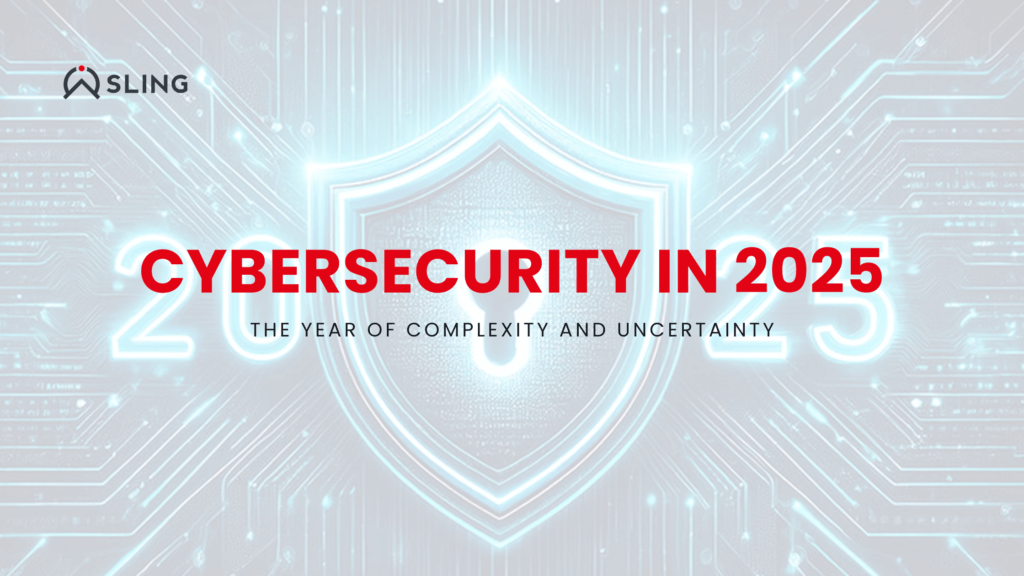As we move further into 2025, one thing is clear—the cyber threat landscape is evolving at a relentless pace. Attackers are increasingly leveraging artificial intelligence (AI) to automate and refine their attacks, while businesses struggle to keep up with regulatory shifts and a widening cybersecurity skills gap.
Cybersecurity has never been simple, but 2025 is shaping up to be a defining moment for organizations worldwide. Will companies rise to the challenge, or will the increasing complexity of the digital world leave them exposed? According to the World Economic Forum’s Global Cybersecurity Outlook 2025, organizations are facing record-breaking cyber risks, with over 3,100 data breaches reported in 2024 and a staggering 211% surge in victim notifications due to five major breaches alone. Let’s dive into the trends that will shape cybersecurity this year.
A New Era of Cybercrime: More Than Just Data Breaches
In the past, cyber threats were often associated with data breaches and ransomware attacks, but in 2025, we’re facing something far more intricate. While breaches remain a significant issue, with billions of personal records exposed in 2024 alone, it’s no longer just about stolen data.
The real game-changer? AI-powered cybercrime.
Cybercriminals are now using AI to craft more convincing phishing emails, deepfake scams, and automated attacks at an unprecedented scale. Organizations are also deploying AI for cybersecurity defense, yet many lack proper security measures to assess the risks of the very tools they are implementing. This paradox introduces unforeseen and potentially severe consequences, leaving businesses vulnerable to sophisticated attacks.
The Biggest Cybersecurity Challenges of 2025
As businesses navigate this new era of cyber risk, six major challenges are standing in their way:
1. Supply Chains Are Still the Weak Link
Companies are more interconnected than ever, but this also means that a single weak supplier can compromise an entire network. Many businesses still don’t have full visibility into their vendors’ cybersecurity practices, making them an easy target for attackers looking for a way in. In fact, 54% of large organizations cite supply chain security as their biggest cyber resilience challenge (World Economic Forum, 2025).
2. Cyber Warfare and Political Tensions Are Escalating
Cyberattacks are no longer just about financial gain—they’re becoming a weapon of geopolitical conflict. Governments and corporations alike are on high alert as cyber espionage, state-sponsored hacking, and critical infrastructure attacks continue to rise.
3. AI Is a Double-Edged Sword
AI is revolutionizing cybersecurity defenses, but its adoption is outpacing security measures. Without proper oversight, businesses are rushing to deploy AI tools without assessing the security risks, potentially introducing more vulnerabilities than they are solving.
4. The Rise of AI-Driven Social Engineering Attacks
Cybercriminals no longer need to spend time crafting manual phishing scams, AI can do it for them. AI-generated deepfakes, synthetic voice scams, and automated spear-phishing attacks are becoming more convincing and harder to detect, increasing the risk of financial and reputational damage.
5. The Regulatory Maze Is Getting More Complex
With cybersecurity laws evolving worldwide, businesses are struggling to keep up. Compliance is no longer just a checkbox, it’s a constant balancing act between meeting regulatory requirements and maintaining operational flexibility.
6. The Cybersecurity Talent Shortage Is Worsening
The demand for cybersecurity professionals is outpacing supply, with millions of jobs remaining unfilled. The cyber skills gap grew by 8% in 2024, and two-thirds of organizations are now facing moderate to critical talent shortages. Alarmingly, only 14% of companies feel confident in their cybersecurity team’s ability to handle today’s threats.
How Can Businesses Stay Ahead?
While the challenges ahead may seem daunting, they are not insurmountable. The key to cybersecurity in 2025 is adaptability. Here’s what businesses can do to stay resilient:
✅ Strengthen Supply Chain Security: Conduct continuous vendor risk assessments and establish clear cybersecurity requirements for third-party providers.
✅ Implement AI Governance: Before deploying AI-driven tools, organizations should have a clear framework to assess risks and mitigate potential security gaps.
✅ Train Employees to Spot AI-Driven Attacks: Security awareness training is no longer optional—every employee must be equipped to recognize and respond to AI-enhanced social engineering tactics.
✅ Invest in Cybersecurity Talent Development: Companies that prioritize upskilling and retaining security talent will have a significant advantage in navigating the cyber challenges of the future.
✅ Stay Ahead of Regulatory Changes: Compliance is a moving target, so businesses must adopt flexible cybersecurity policies that align with evolving regulations.
Is Your Business Ready for 2025?
Cybersecurity in 2025 is more than just a technical issue—it’s a business survival issue. Companies that embrace proactive security strategies, invest in AI governance, and address the talent gap will be the ones that thrive in an increasingly volatile digital landscape.
The threats are evolving. The question is: Is your organization evolving fast enough to keep up?
Let’s continue the conversation—how is your business preparing for the cybersecurity challenges of 2025?



